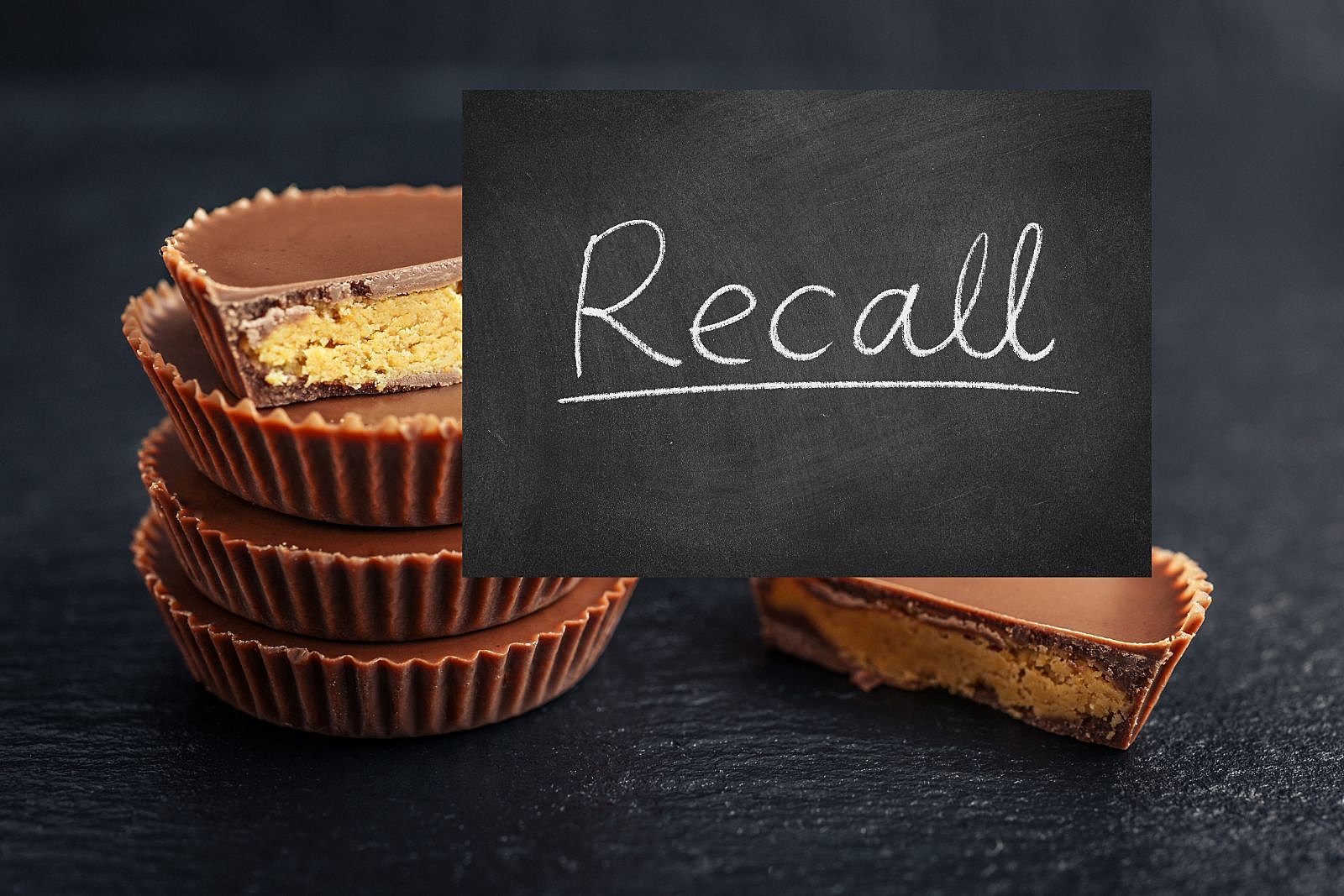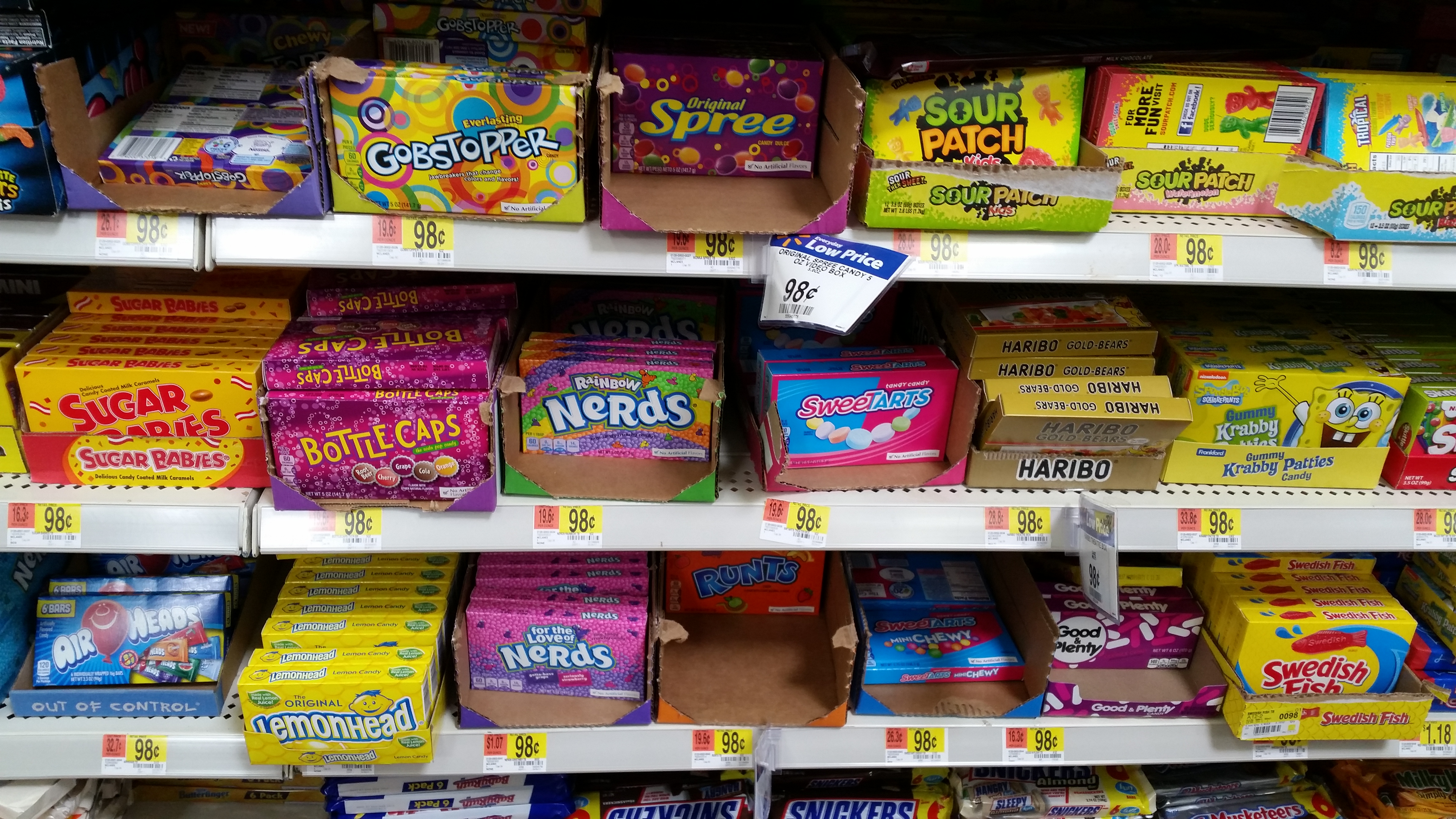Walmart Candy Recall History

Walmart, being one of the largest retailers globally, has a significant presence in the candy market. However, like any other company, it has faced product recalls due to various safety concerns. This section will delve into the history of candy recalls at Walmart, providing insights into the common reasons behind them and the procedures followed during such events.
Timeline of Major Candy Recalls at Walmart
The past five years have witnessed several major candy recalls at Walmart, each impacting consumers and highlighting the importance of food safety regulations. Here’s a timeline of some notable recalls:
- 2018: Product: Various chocolate products containing milk chocolate. Reason: Possible Salmonella contamination. Impact: Several states were affected, leading to potential illnesses and a significant product withdrawal from shelves.
- 2019: Product: Gummy candies. Reason: Undeclared peanut and tree nut allergens. Impact: Consumers with allergies could have experienced severe reactions, leading to a widespread recall.
- 2020: Product: Hard candies. Reason: Presence of foreign objects (metal fragments). Impact: Potential choking hazards and injuries prompted a swift recall, emphasizing the importance of manufacturing quality control.
- 2021: Product: Chocolate bars. Reason: Mislabeling of ingredients (allergen concerns). Impact: Consumers with allergies could have consumed products containing undeclared ingredients, prompting a wide-scale recall.
- 2022: Product: Sour candies. Reason: Potential presence of Listeria monocytogenes bacteria. Impact: A serious health risk, leading to a widespread recall and emphasizing the need for stringent hygiene practices in food production.
Common Reasons for Candy Recalls at Walmart
Candy recalls at Walmart, like those in other retailers, are often triggered by several factors, highlighting the need for robust safety protocols throughout the supply chain.
- Allergen Mislabeling: Incorrect labeling of ingredients, especially concerning common allergens like peanuts, tree nuts, and dairy, can lead to severe reactions in sensitive individuals. This emphasizes the importance of accurate labeling and strict allergen control measures during manufacturing.
- Foreign Object Contamination: The presence of foreign objects, such as metal fragments, plastic pieces, or insects, poses a significant health risk, potentially causing choking hazards or injuries. This underscores the importance of rigorous quality control measures throughout the production and packaging processes.
- Microbial Contamination: The presence of harmful bacteria, such as Salmonella or Listeria, can cause serious foodborne illnesses. This emphasizes the need for stringent hygiene practices, proper food handling, and effective sanitation measures in food production facilities.
- Misleading Packaging or Labeling: Inaccurate or misleading information on product packaging, such as incorrect ingredient lists or nutritional claims, can mislead consumers and potentially cause allergic reactions or health issues. This highlights the importance of clear and accurate labeling practices to ensure consumer safety.
Walmart’s Recall Procedures
Walmart follows a comprehensive set of procedures during candy recalls to ensure consumer safety and minimize the impact of the situation. These procedures involve:
- Rapid Communication: Walmart promptly communicates the recall information to consumers through various channels, including its website, social media platforms, press releases, and store signage. This ensures that affected consumers are aware of the recall and can take appropriate action.
- Product Removal: Walmart immediately removes the recalled products from its shelves and distribution centers, ensuring that no contaminated products reach consumers. This proactive approach helps to prevent further potential health risks.
- Consumer Support: Walmart provides consumers with clear instructions on how to return the recalled products and offers refunds or replacements. This ensures that consumers are not financially impacted by the recall and are encouraged to return the affected products.
- Collaboration with Suppliers: Walmart collaborates closely with its suppliers to investigate the root cause of the recall and implement corrective measures to prevent future occurrences. This collaborative approach helps to address the issue comprehensively and improve overall food safety practices.
Consumer Actions During a Candy Recall, Walmart recalls candy
Consumers play a crucial role in ensuring their safety during a candy recall. Here’s what consumers should do:
- Check for Recalls: Stay informed about potential recalls by regularly checking the Walmart website, subscribing to recall alerts, and monitoring news sources.
- Inspect Products: Carefully inspect any candy products you have at home to see if they match the description of the recalled product.
- Return Recalled Products: If you have a recalled product, immediately return it to the store for a full refund or replacement.
- Contact Walmart: If you have any questions or concerns about a candy recall, contact Walmart customer service for further information and guidance.
Impact of Candy Recalls on Walmart

Candy recalls can have a significant impact on Walmart, both financially and reputationally. While Walmart has a strong brand image and robust recall management processes, recalls can still negatively affect sales, consumer trust, and overall brand perception.
Financial Impact of Candy Recalls
Candy recalls can lead to substantial financial losses for Walmart. The costs associated with recalls can include:
- Inventory write-offs: Recalled candy must be removed from shelves and destroyed, resulting in lost inventory value.
- Refund costs: Walmart needs to reimburse customers for the recalled candy, which can be a significant expense, especially for large-scale recalls.
- Legal fees and settlements: In some cases, recalls may lead to lawsuits or settlements, adding to the financial burden.
- Loss of sales: Recalls can damage consumer trust and lead to decreased sales of affected products, and even other candy items, as consumers may become hesitant to purchase any candy from Walmart.
The financial impact of a recall can vary depending on the scale of the recall, the type of candy involved, and the duration of the recall. For example, a large-scale recall of a popular candy brand could result in millions of dollars in losses for Walmart.
Public Relations Strategies for Managing Negative Publicity
Walmart employs various public relations strategies to manage the negative publicity associated with candy recalls. These strategies include:
- Swift and transparent communication: Walmart promptly informs consumers about the recall, providing clear and concise information about the affected products, the reason for the recall, and instructions for returning the product.
- Customer-centric approach: Walmart prioritizes customer safety and satisfaction by providing easy-to-follow return procedures and offering refunds or replacements for recalled products.
- Active engagement with media: Walmart proactively engages with the media to address concerns, provide updates on the recall, and highlight the company’s commitment to product safety.
- Social media engagement: Walmart utilizes social media platforms to communicate with consumers, answer questions, and address concerns about the recall.
By implementing these strategies, Walmart aims to minimize the negative impact of recalls on its reputation and maintain consumer trust.
Examples of Walmart’s Response to Previous Candy Recalls
Walmart has a history of effectively managing candy recalls. In 2019, Walmart recalled a batch of chocolate bars due to potential contamination. The company promptly issued a press release, notified consumers through social media, and implemented a system for returning the affected products. Walmart’s swift and transparent response helped minimize the negative publicity associated with the recall.
In another instance, Walmart recalled a batch of gummy candies due to a packaging error. The company worked closely with the manufacturer to identify the affected products and quickly removed them from shelves. Walmart also provided a toll-free number for consumers to contact for information and assistance. The company’s proactive approach and commitment to customer safety helped to restore consumer confidence.
Consumer Safety and Recall Awareness: Walmart Recalls Candy

Candy recalls are a serious matter, impacting not only Walmart’s reputation but also the well-being of consumers. It is crucial to understand the potential hazards associated with recalled candy and how to protect yourself from them.
Potential Hazards Associated with Candy Recalls
Understanding the potential hazards associated with candy recalls is crucial for ensuring consumer safety. Here’s a breakdown of the common types of hazards:
| Hazard | Description | Example |
|---|---|---|
| Choking Hazards | Small candy pieces, especially those intended for children, can pose a choking risk, particularly for young children. | Hard candies, gummies, and small chocolate pieces. |
| Allergens | Undeclared allergens, such as peanuts, tree nuts, milk, soy, or wheat, can trigger severe allergic reactions in individuals with sensitivities. | Candy bars containing nuts, chocolate products with milk, or candies with soy or wheat-based ingredients. |
| Contamination | Candy products can be contaminated with bacteria, molds, or other harmful substances during production, packaging, or storage. | Candy contaminated with Salmonella or E. coli, or candy containing foreign objects like glass or metal. |
Identifying Recalled Candy Products
Staying informed about candy recalls is vital for consumer safety. Here’s a guide to help you identify recalled products:
* Packaging: Carefully examine the packaging for any signs of damage, tampering, or unusual labeling.
* Labeling: Check the product label for any recall information, including the product name, brand, size, and lot number.
* Recall Notices: Visit the Walmart website, the FDA website, or other official sources to access recall notices.
Importance of Consumer Vigilance
Consumer vigilance plays a crucial role in ensuring the safety of candy products. Here’s why reporting suspected unsafe candy products is important:
* Public Health Protection: Reporting suspected unsafe candy products helps prevent further illnesses or injuries.
* Product Removal: Reporting incidents can lead to the swift removal of contaminated or hazardous products from the market.
* Enhanced Safety Measures: Consumer reports help identify potential safety issues and prompt manufacturers to implement necessary safety measures.
Walmart recalls candy – While Walmart grapples with the recall of potentially contaminated candy, it’s a stark reminder that even seemingly mundane events can have global implications. The recent tensions between Israel and Iran, a conflict with deep historical roots, israel iran news , have also impacted the global supply chain, potentially affecting the very products we consume, including those sold at Walmart.
As we navigate these complex realities, it’s crucial to remain aware of the interconnectedness of our world, even when it comes to seemingly simple things like candy.
Walmart’s recent candy recall highlights the importance of safety in our daily lives, reminding us that even seemingly harmless treats can pose risks. This incident echoes the recent helicopter crashes into hilton hotel , which serves as a stark reminder that unforeseen events can happen anywhere.
While the candy recall focuses on potential health concerns, the helicopter crash underscores the fragility of safety and the importance of vigilance in all aspects of our lives.
